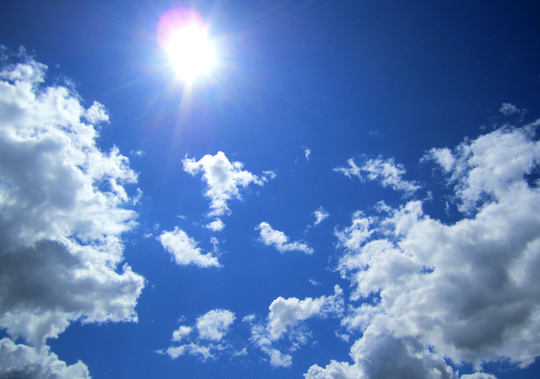With the days warming and the sun gleaming, it’s that time of the year again. While the warm rays of the sun may be more comfortable than the bitter cold, it should be noted that enjoying the sun (or simply having to work outdoors) should be done with care.
There has been a lot of confusion with the two main types of UV rays that the sun produces: UVA and UVB rays. Both of these rays are able to penetrate the atmosphere and cause permanent damage to our skin and eyes. In addition, they can suppress our immune system, hindering our ability to fight off different ailments. However, the main concern that surrounds these UV rays is skin cancer. Too much UV radiation causes damage to our skin’s cellular DNA which can produce mutations. According to the U.S. Department of Health and Human Services and the World Health Organization, UV is a proven human carcinogen. Now, let’s take a look at the differences between UVA and UVB rays.
UVA rays, though the less intense of the two rays, are more prevalent. They are actually relatively equal in intensity throughout the year and can penetrate clouds and glass. Penetrating deeper than UVB, UVA has a larger role in skin aging and wrinkling, and may even initiate the development of skin cancers. Exposure to these rays causes cumulative damage over time.
UVB rays, the main cause behind sun burn and skin reddening, has a tendency to do more superficial skin damage when compared to its counterpart. According to The Skin Cancer Foundation, “[UVB] plays a key role in the development of skin cancer and a contributory role in tanning and photoaging. Its intensity varies by season, location, and time of day.” From 10 AM to 4 PM in April through October in the U.S., you can expect more significant amounts of UVB rays.
While this may seem a bit worrisome, there are many ways to protect yourself from these harmful rays and still enjoy the sun and work outdoors. If possible, seek shade during the most intense UV hours between 10 AM and 4 PM. If not, be sure to apply SPF 15 sunscreen 30 minutes before going outdoors. Apply a water-resistant, SPF 30 sunscreen for extended outdoor activity. Be sure to follow the application directions on the bottle. Reapply every 2 hours or immediately after swimming or intense sweating. Lastly, check your skin head-to-toe every month, noting any new or unusual changes and regularly see your physician for a professional skin exam.
By taking precautions, you can enjoy any of your outdoor activities. Take control, be safe, and enjoy the sunshine!
Source: “UVA & UVB – SkinCancer.org.” The Skin Cancer Foundation – SkinCancer.org, www.skincancer.org/prevention/uva-and-uvb.

